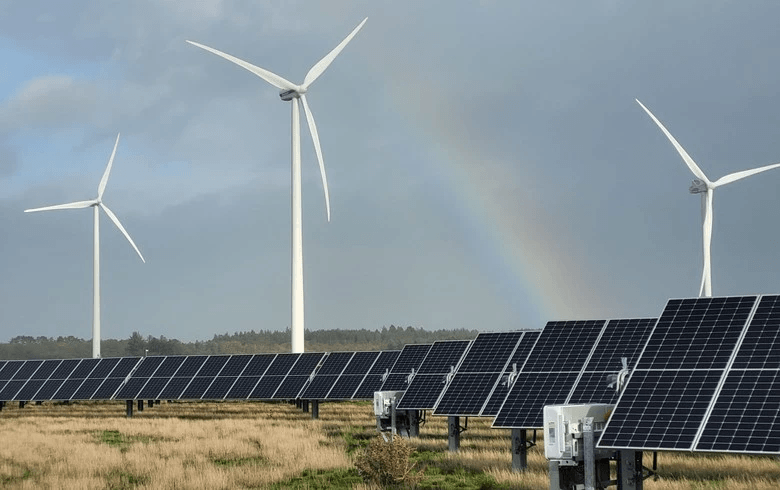In Short : Southeast Asia’s extensive coastlines present a tremendous opportunity for the region to become a superpower in offshore wind energy. The vast stretches of open sea offer ideal conditions for harnessing wind energy, a clean and renewable resource crucial for meeting the region’s growing power demands while mitigating climate change.
In Detail : Asia is poised to become the global leader in wind power by 2050, accounting for over 60% of all offshore wind capacity installed worldwide. For this to happen, ASEAN (Association of South East Asian Nations) governments must focus resources and hasten building the preparatory infrastructure, conduct early community interactions, and ensure honest, transparent, and smooth business transactions.
According to the Global Wind Energy Council (GWEC), as of November 2023, the total offshore wind power capacity in the Asia-Pacific region is 30.1 GW. It expects the Asian offshore market to have nearly 100 GW of offshore wind capacity installed by 2030. Estimates indicate that this can easily triple by 2050.
Comparatively, the International Renewable Energy Agency (IRENA), reports that the whole of Asia is expected to have more than 2,600 gigawatts (GW) of onshore wind capacity installed by 2050.
China is leading the way in Asia’s wind power development, but other countries such as India, Japan, and South Korea are also making significant investments in this renewable energy source. It accounts for the vast majority of offshore wind capacity in the Asia-Pacific region, with 29.8 GW installed. Other countries with significant offshore wind capacity include Thailand with 1.5 GW, South Korea with 450 MW, Philippines with 443 MW, and Japan with 393 MW, all onshore wind. Vietnam has a near-shore capacity of 252 MW.
Moving To Offshore Wind
The growth of offshore wind among many ASEAN nations is driven by a number of factors, including long coastlines that provide abundant wind resources, available land and offshore space, attention from private investors, and declining costs of wind turbines. Some countries like Indonesia, the Philippines, Thailand, and Vietnam have developed favorable government policies.
Southeast Asia’s estimated wind energy potential until 2030 is estimated at 930 GW. Indonesia has the highest wind energy potential in Southeast Asia, with an estimated 380 GW of potential. The Philippines follows with 178 GW, then Vietnam with an estimated 160 GW of wind energy potential.
Malaysia has relatively low wind speeds compared to other countries. Its mean annual wind speed is no more than 2 m/s, which is below the minimum speed of 4 m/s required for most wind turbines to generate electricity. As a result, wind energy has not yet been successfully harnessed in that country.
Possible Obstacles In Southeast Asia
There are some challenges to developing wind energy in Southeast Asia, such as a lack of transmission infrastructure, high upfront costs of wind turbines, and environmental concerns. However, these challenges are being addressed, and the region is well-positioned to become a global leader in wind power.
- Offshore wind requires massive investments in port facilities, transmission lines, and other infrastructure to support the development of offshore wind farms. The technology is still relatively new and there is a lack of local expertise. This means that developers often have to rely on foreign companies, which can drive up costs.
- An upgrade to the power grids will be absolutely necessary to accommodate both feeding in the power from an offshore routing gird and the intermittent nature of offshore wind power.
- There is a need to shift public perception and to raise public awareness of the benefits of offshore wind and to address any concerns that people may have about the technology.
- In addition, some Southeast Asian countries have complex and bureaucratic regulatory environments. This can make it difficult and time-consuming to get the necessary approvals for offshore wind projects. Recently, Indonesia and Thailand redirected policy to encourage offshore win. Vietnam’s centralized government has pushed the energy source forward and faster that any other country in the region.
- Corruption and politics can also hinder offshore wind development in Southeast Asia. For example, corruption can lead to delays in the approval process and favoritism towards certain companies. Governments may be reluctant to support offshore wind if it is seen as a threat to vested interests.
Despite these challenges, the growing interest in offshore wind development in Southeast Asia. The region has excellent wind resources and a growing demand for electricity. With the right policies and support, offshore wind can play a major role in meeting Southeast Asia’s energy needs in the future.

